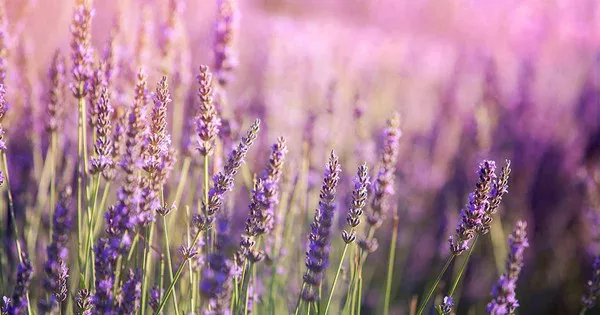Lavender, with its fragrant blooms and versatile uses, is a favorite among gardeners and herbal enthusiasts. Its soothing aroma and therapeutic properties make it a popular choice for gardens and landscapes. However, to enjoy the beauty and benefits of lavender, one must first understand the factors that influence its flowering time. In this article, we will delve into the intricacies of lavender flowering and explore its varieties, ideal growing conditions, and pruning techniques.
Varieties of Lavender
Before we dive into the flowering timeline of lavender, it’s essential to recognize that there are various lavender varieties, each with its unique characteristics. Some of the most common types include:
1. English Lavender (Lavandula angustifolia)
English lavender, often referred to as true lavender, is renowned for its rich aroma and vibrant violet-blue flowers. It typically blooms in late spring to early summer, making it one of the earliest flowering lavender varieties.
2. French Lavender (Lavandula stoechas)
French lavender, with its distinctive butterfly-like blooms and gray-green foliage, blooms from late spring to early summer. This variety is known for its tolerance to warmer climates and well-drained soil.
3. Spanish Lavender (Lavandula dentata)
Spanish lavender is easily recognizable by its serrated leaves and long, showy flower spikes topped with bracts resembling pineapples. It generally blooms from late spring through early summer.
4. Lavandin (Lavandula x intermedia)
Lavandin is a hybrid lavender species resulting from the crossbreeding of English and spike lavender. It boasts a more extensive flowering period, usually from mid to late summer.
Factors Influencing Lavender Flowering
The timing of lavender flowering is influenced by various factors, and understanding these variables is crucial for successful cultivation. Here are the primary factors that affect when lavender blooms:
1. Climate and Location
Lavender is native to the Mediterranean region, where it thrives in sunny, well-drained soils. In regions with a Mediterranean-like climate, lavenders tend to bloom earlier in the year. However, in colder climates, they may not flower until late spring or early summer when temperatures rise.
2. Sunlight
Lavender is a sun-loving plant that requires at least 6-8 hours of direct sunlight daily to bloom optimally. A lack of sunlight can delay or even prevent flowering.
3. Soil Quality and Drainage
Well-drained soil is essential for lavender. It dislikes sitting in waterlogged conditions, which can lead to root rot and delayed flowering. Lavender thrives in sandy or loamy soils with good drainage.
4. Pruning
Pruning lavender is a delicate art. If pruned at the wrong time, it can affect flowering. To promote healthy growth and flowering, prune lavender in early spring, just as new growth begins. Avoid pruning in late summer or fall, as this can remove potential flower buds.
5. Watering
Lavender prefers to be on the drier side. Overwatering can hinder its flowering, so it’s important to let the soil dry out between watering sessions.
Lavender Flowering Timeline
The flowering timeline of lavender can vary depending on the factors mentioned above and the specific lavender variety you are growing. Here’s a general guideline for when you can expect lavender to flower:
1. Early Spring
English lavender (Lavandula angustifolia) and French lavender (Lavandula stoechas) typically begin to flower in early spring, usually from April to June.
2. Late Spring
Spanish lavender (Lavandula dentata) follows, with its blooms emerging in late spring, from May to July.
3. Mid to Late Summer
Lavandin (Lavandula x intermedia), the hybrid lavender, tends to have a more extended flowering period, often starting in mid-summer and continuing into late summer or early fall.
Keep in mind that these are general guidelines, and actual flowering times can vary due to regional climate differences and individual growing conditions. It’s essential to monitor your lavender plants closely to determine their specific flowering schedule.
Tips for Encouraging Lavender Flowering
To ensure your lavender plants flower abundantly and thrive, here are some additional tips:
1. Prune Regularly
Regular pruning, as mentioned earlier, is essential for promoting new growth and flowering. Trim back spent flower spikes to encourage the development of new buds.
2. Adequate Drainage
Ensure that your lavender plants are in well-drained soil or plant them in raised beds or containers if your soil doesn’t drain well.
3. Avoid Overfertilizing
Lavender doesn’t require heavy fertilization. In fact, excessive fertilization can lead to lush foliage at the expense of flowers. Use a balanced, slow-release fertilizer sparingly.
4. Mulch
Applying a layer of organic mulch around your lavender plants can help retain soil moisture, regulate temperature, and prevent weed growth, ultimately promoting better flowering.
5. Maintain Proper Spacing
Plant lavender with enough space between each plant to allow for good air circulation. This prevents disease and encourages flowering.
Conclusion
The timing of lavender flowering is a complex interplay of environmental factors, lavender varieties, and proper care. By understanding these factors and following best practices for lavender cultivation, you can enjoy the beauty and fragrance of lavender blooms in your garden or landscape. Whether you prefer the early spring charm of English lavender or the late summer allure of lavandin, cultivating lavender can be a rewarding and aromatic experience for any gardener.


